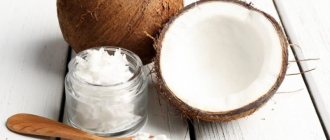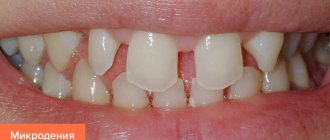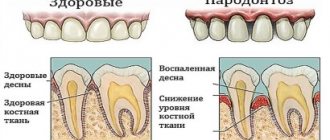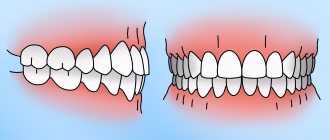Wellness
November 14, 2019
text: My Handbook
Oil pulling is an effective oral detox technique that has gained a lot of popularity these days. While not a replacement for routine teeth brushing, oil pulling for 10-20 minutes is considered an effective hygiene procedure that has a positive effect on the health of teeth and gums.
This practice became known from the classical Ayurvedic text Charaka Samhita, in which it is referred to as Kavala and Gandusha. It is claimed to treat about 30 systemic diseases: from headaches and migraines to diabetes and asthma. In India, oil pulling is considered a traditional folk remedy for strengthening teeth and jaws, and also helping to get rid of caries, throat and gum diseases.
Tatyana Korsakova has been practicing oil pulling in the morning for several years. A recent visit to the dentist confirmed that the oil pulling procedure has a noticeable therapeutic and hygienic effect. “The therapist was surprised at how good my teeth and gums were,” says Tatyana. “I advise everyone to implement this practice in their morning.”
Oil pulling theory
Oil pulling uses the ability of oil to attract its own kind, namely to pull other oils and fat-soluble toxins from tissues, thereby providing a cleansing effect. Bacteria that inhabit the oral cavity have a greasy outer shell. When they come into contact with another fatty substance, such as oil, they stick or are attracted to it.
Since the oil has the ability to penetrate into hard-to-reach areas of the mouth where a toothbrush cannot reach, it can trap hidden bacteria.
This amazing property of oils has been used for centuries in classical Ayurvedic detox practices. The ancient Indian system of medicine includes the concept of ama, which refers to accumulated toxins and various impurities in the body. Ama is believed to be partially digested material derived from food that clogs the body and causes an immune reaction. It is precisely to reduce this ballast that oil rinsing is aimed.
According to Ayurveda, the tongue is associated with various organs such as the kidneys, heart, lungs, small intestine and spine. Oil pulling is believed to help in eliminating toxic heavy metals through saliva. Oil pulling activates salivary enzymes that absorb toxins and remove them from the body through the tongue.
Here is what the canonical book of Ayurveda, Charaka Samhita, says: “The practice of oil pulling provides strength in the jaw and voice, facial development, maximum taste and pleasure in food. A person who practices it does not suffer from a dry throat, is not afraid of cracked lips, and his teeth are not affected by caries, but become strong. They (teeth) are not painful, are not hypersensitive to sour taste, but gain the ability to chew even the hardest food.”
Mucositis (inflammation of the oral mucosa)
Some cancer treatments, including radiation therapy to the head and neck, can affect cells in the mouth and digestive tract. This phenomenon is known as mucositis.
Mucositis can cause redness, swelling, tenderness, and ulcers on the lining of the mouth, tongue, and lips. You may experience discomfort in your mouth and throat, making it difficult to eat or swallow. These symptoms may appear 3-10 days after starting treatment. How quickly they go away depends on your immune system and the treatment you receive.
to come back to the beginning
How to rinse your mouth with oil according to Ayurveda
According to Ayurveda, the procedure of rinsing the mouth with oil must certainly be carried out on an empty stomach and take from 5 to 20 minutes. Moreover, the traditional practices of Kavala and Gandusha are somewhat different from each other. The more famous Kavala is a procedure for washing teeth, gums and other internal surfaces of the oral cavity.
According to Gandusha, you should simply fill your mouth with a comfortable amount of oil and keep it inside for three to five minutes. At the end of rinsing, the oil must be spat out, and then rinse your mouth thoroughly with water and brush your teeth.
Minerals for periodontal disease
In addition to vitamins, gums and teeth need the following minerals:
- calcium;
- zinc;
- copper;
- iron;
- selenium.
Calcium is a “building element” for teeth and gums. Traditionally, calcium is found in milk, cheeses, yogurt, and sour cream.
Zinc takes part in the regenerative processes of bone tissue. Contained in legumes, beef, lentils, seafood.
Copper is necessary for healthy hematopoiesis, as well as the strengthening of iron in the body. High copper content is found in bread, potatoes, and liver. To ensure copper is absorbed better, it is recommended to include fermented milk products in your diet.
Iron helps enrich the body with oxygen. It is found in buckwheat, liver, beans, and beef.
Selenium is found in foods such as beans, peas, lentils, broccoli, barley, and nuts.
What Science Says
Some people think that oil pulling is unscientific. However, today there are several scientific findings that confirm the positive effects of oil pulling. A 2021 study describes the benefits this way: “Oil pulling improves oral hygiene when practiced correctly and regularly. The limited research available on the effects of oil pulling on oral hygiene shows promising benefits.”
And although oil pulling is often called a detox procedure, scientists do not share its ability to fully rid the body of toxins. Yes, the oil removes bacteria and physical particles from the mouth, but it is not able to remove toxic particles from the bloodstream or tissues. This is done by the kidneys and liver.
An earlier study from 2009 found that the benefits of oil pulling were comparable to chlorhexidine mouth rinses: “Oil therapy showed a reduction in plaque levels, changes in gingival parameters and total aerobic colony counts.” Scientists spoke out even more specifically in favor of oil pulling in 2014: “Rinsing your mouth with sesame oil is as effective in reducing bad odor and the microbes that cause it as a chlorhexidine solution. Gargling should be promoted as a preventative home care therapy.”
Scientists from Kerala in 2015 recorded a statistically significant decrease in plaque and gingivitis levels already on the seventh day of coconut oil therapy. The study highlighted the anti-inflammatory and antimicrobial properties of lauric acid, which coconut oil is rich in. This may be why coconut oil pulling has become so popular these days.
Oil pulling: reviews and opinions of doctors
The lack of scientific knowledge about oil pulling caused a skeptical attitude towards it on the part of doctors. Most of them, while allowing the practice of oil pulling as an additional care, also remind patients to maintain routine routines such as brushing twice daily and flossing.
“I'm not aware of any direct risks associated with oil pulling, but using it as a substitute for regular brushing will certainly increase your risk of tooth decay,” says dentist Corbin Brady. “Oil does not remove plaque or reduce bacteria sufficiently.”
Lisa Matriste, a respected dentist from Australia, recommends that those with amalgam fillings avoid oil pulling: “Never rinse your mouth with oil if you have amalgam fillings. The mercury they contain is lipophilic, meaning it is attracted to oils and fats. "Rinsing will draw out the mercury from the fillings, which will then be absorbed into the tissue, inadvertently poisoning your body at a high rate."
Possible harm and contraindications
Oil pulling can cause the greatest harm if you do not know how to rinse your mouth with oil correctly or if you use this procedure as a replacement for standard care. It is extremely important to avoid swallowing the oil as it may cause stomach upset or diarrhea. Also, according to the American Dental Association, oil getting into the lungs poses a risk of developing lipoid pneumonia. It is for this reason that the practice of oil pulling is not recommended for young children. It is worth paying attention to the composition of the oil used, since some of them may contain harmful additives.
When introducing a new hygiene practice into your morning routine, it is important not to overdo it. Rinsing your mouth for more than 20 minutes can cause a variety of side effects, including thirst, dry mouth, and decreased taste sensitivity.
What oil to rinse your mouth with?
In traditional Ayurveda, sesame is used, this is an oil of oils according to ancient Indian teachings. Cold-pressed coconut has no less powerful properties, the positive effects of which have been repeatedly confirmed by scientists. You can use other herbal options. When wondering what oil you should rinse your mouth with in the morning, rely on personal preferences, while fulfilling the main condition: the product must be unrefined and preferably organic.
Rinse your mouth with sesame oil
Sesame oil has been used as a mouthwash for centuries. Its composition is rich in microelements and polyunsaturated fatty acids, and also contains a large amount of lipids, which can effectively destroy bacteria and restore natural whiteness to teeth. Pulling with this oil also helps prevent tooth decay and strengthen tooth enamel.
Coconut Oil Mouth Rinsing
Over the past few years, coconut pulp oil has gained incredible popularity in cosmetology and is actively used in oil pulling. Half of its composition is lauric acid. It has strong anti-inflammatory and antimicrobial properties, kills bacteria, viruses and yeast infections, and protects teeth from tooth decay. Also, coconut oil, unlike other oils, does not stain teeth or dull the sense of taste when used regularly.
Gargling with flaxseed oil
Flaxseed oil is widely known for its medicinal properties. Flax seeds contain vegetable fats and omega acids, protein, as well as many vitamins and biologically active substances. Oil pulling with this type of oil allows you to get rid of the problem of bleeding gums, strengthen the enamel and whiten your teeth. Rinsing your mouth with flaxseed oil is not recommended for children under three years of age, pregnant women and people with biliary tract diseases.
Rinsing your mouth with sunflower oil: benefits and harms
Sunflower oil often plays the role of a democratic alternative to sesame and coconut oils. Its composition is rich in vitamin E and contains linoleic acid, which is responsible for the structure and normal functioning of cells and tissues of the body. The answer to the question of why you should rinse your mouth with sunflower oil will be its exceptional ability to draw out toxins, eliminate bad breath and get rid of yellowish plaque. The disadvantages of this oil include the high content of Omega-6 fatty acids, which can cause inflammatory processes in the oral cavity.
Gargling with essential oils
As a supplement to the main oil, you can use a few drops of some essential oil intended for internal use. To enhance the antibacterial effect, tea tree, oregano or mint oils are perfect. Black cumin oil, which has anti-inflammatory and analgesic properties, will add accompanying healing properties to the procedure.
The dilemma remains unresolved whether it is possible to rinse your mouth with mustard oil. Although mustard seed oil protects against infections and has a teeth whitening effect, it is also one of the most poisonous essential oils and can cause inflammation of the digestive system and kidneys if ingested.
Diet for periodontal disease
The main goal of a diet for periodontal disease is to saturate the body with vitamins and minerals that would help strengthen the gum tissue. The diet should include special foods:
- Solid food
It is solid foods that provide the so-called natural training of gums and teeth. But here you need to stick to the “golden mean”, that is, eat solid foods in moderation: apples, carrots, cucumbers, meat. You should avoid nuts and too hard grains.
But in case of acute periodontal disease, hard foods should be avoided, as they damage soft tissues and cause continuous bleeding of the gums. Include pureed foods and more liquid dishes in your diet.
- Dairy and fermented milk products
“Milk” is enriched with calcium, which is important for the formation of healthy gums and teeth. And fermented milk products activate the gastrointestinal tract, saturate the body with useful substances that are necessary for natural tissue regeneration. Kefir, fermented baked milk, yoghurts, cheese, cottage cheese, sour cream must be included in the daily diet. But you should avoid sugar; you can add a little honey instead.
- Citrus
They contain a large amount of vitamin C. Oranges, lemons, grapefruit, tangerines are welcome. Drink tea with lemon, which also has a tonic effect.
A diet for periodontal disease involves saturating the diet with fruits, vegetables, and dairy products. For protein, seafood, fish, and lean meats are recommended. Everything that is heavy and difficult for the body to digest should be excluded, including alcoholic and low-alcohol drinks.
Drinks recommended for periodontal disease:
- mineral water without gas (minimum 1.5 liters per day);
- weak green tea;
- compote of their fresh fruits or dried fruits;
- yoghurts;
- uzvar;
- jelly.
How to properly rinse your mouth with oil
Take one tablespoon of oil into your mouth. If using coconut, leave it at room temperature for 15-20 minutes beforehand to soften it. Rinse your mouth for 15-20 minutes, no more.
Do not swallow the oil under any circumstances.
Mixing with saliva and absorbing bacteria, it becomes thinner and larger in area, acquiring a milky tint and toxicity. After rinsing, spit the used oil into the trash, rinse your mouth with warm water and brush your teeth as usual. Don't wash oil down the sink. Once frozen, it can clog the drain pipe.
Oil pulling is done strictly on an empty stomach. If holding oil in your mouth is unpleasant for you, try to distract yourself: take a shower, make a to-do list for the day, read your favorite book. If necessary, reduce the procedure time to five minutes and keep your head down so that the oil does not get into the back of your throat and cause a gag reflex. Gradually increase the rinsing time.
It is better to practice rinsing with vegetable oil every day, but three to four times a week will be enough. It is important not to neglect daily brushing of teeth: oil pulling does not replace it.
Removing tartar at home
Home remedies for tartar can be useful for removing soft plaque without the help of a dentist.
If there is already a hard coating, then you should definitely seek treatment from a specialist. Trying to pick out deposits on your own will not work. As a result, the enamel will only be damaged. It cannot be restored.
- Vinegar and lemon. The acid contained in vinegar and lemon acts against tartar. However, the taste is unpleasant, and the acid has an aggressive effect on tooth enamel. These home remedies should be used no more than once a month.
- Baking Powder: The crystals in baking powder and baking soda act like sandpaper to remove unwanted coating. Dip your fingertip in baking soda and vigorously rub the affected areas. However, the powder can potentially damage healthy gums and tooth enamel.
- Tea tree oil. Rinse your teeth thoroughly with a solution of 1-2 drops in a glass of warm water.
- Xylitol: Xylitol is a sugar substitute and, as an ingredient in chewing gum, can support oral hygiene. Research shows that xylitol is beneficial for dental health.
- Myrrh tincture. Has a preventive effect. Brush sensitive areas along the gum line to reduce acid buildup. The liquid is also used for gum inflammation caused by tartar or its removal.
- Coconut oil and olive oil: Take one or two tablespoons of natural oil in your mouth and rub the liquid between your teeth thoroughly for a few minutes. You must be careful not to swallow it and then rinse your mouth thoroughly with clean water.
- Sesame seeds: Intensive chewing of sesame seeds provides the body with healthy fats and also helps against the formation of tartar. Apply the well-fertilized seed paste several times to the affected areas of the teeth, using your tongue as a tool to create the necessary friction for grinding.
- Celandine. A good remedy not only for skin diseases, but also helps cleanse teeth of plaque. Prepare a decoction and rinse your mouth without swallowing. The plant contains toxins that can harm the stomach.
- A mixture of lemon juice and black radish. Suitable for treatment and preventive measures. Apply to teeth, then rinse with warm water. You cannot clean with a brush after acidic juice, because it softens not only the stones, but also the enamel. You need to wait 30 minutes.
- A decoction of burdock and green beans. Burdock can be picked locally or purchased dry crushed leaves at the pharmacy. The combination of these plants will help soften the stratum corneum.
- Dental floss: Can be used to thoroughly and firmly clean hard-to-reach spaces between teeth.
Oil pulling products
Georganics Oil Pulling Mouthwash Activated Charcoal
A ready-made mouthwash made with organic coconut oil, peppermint essential oil and activated charcoal.
Buy
Nutiva Coconut Oil
USDA Certified Organic, Non-GMO Coconut Oil.
Buy
Aura Cacia Pure Essential Oil
Organic oregano essential oil. USDA certified.
Buy
Flora Sesame Oil
USDA Certified Organic Non-GMO Sesame Oil.
Buy
Aura Cacia Organic Tea Tree
Organic tea tree essential oil. USDA certified.
Buy
Georganics Oil Pulling Mouthwash English Peppermint
Ready-made oil pulling mixture made from organic coconut oil and English mint essential oil.
Buy











